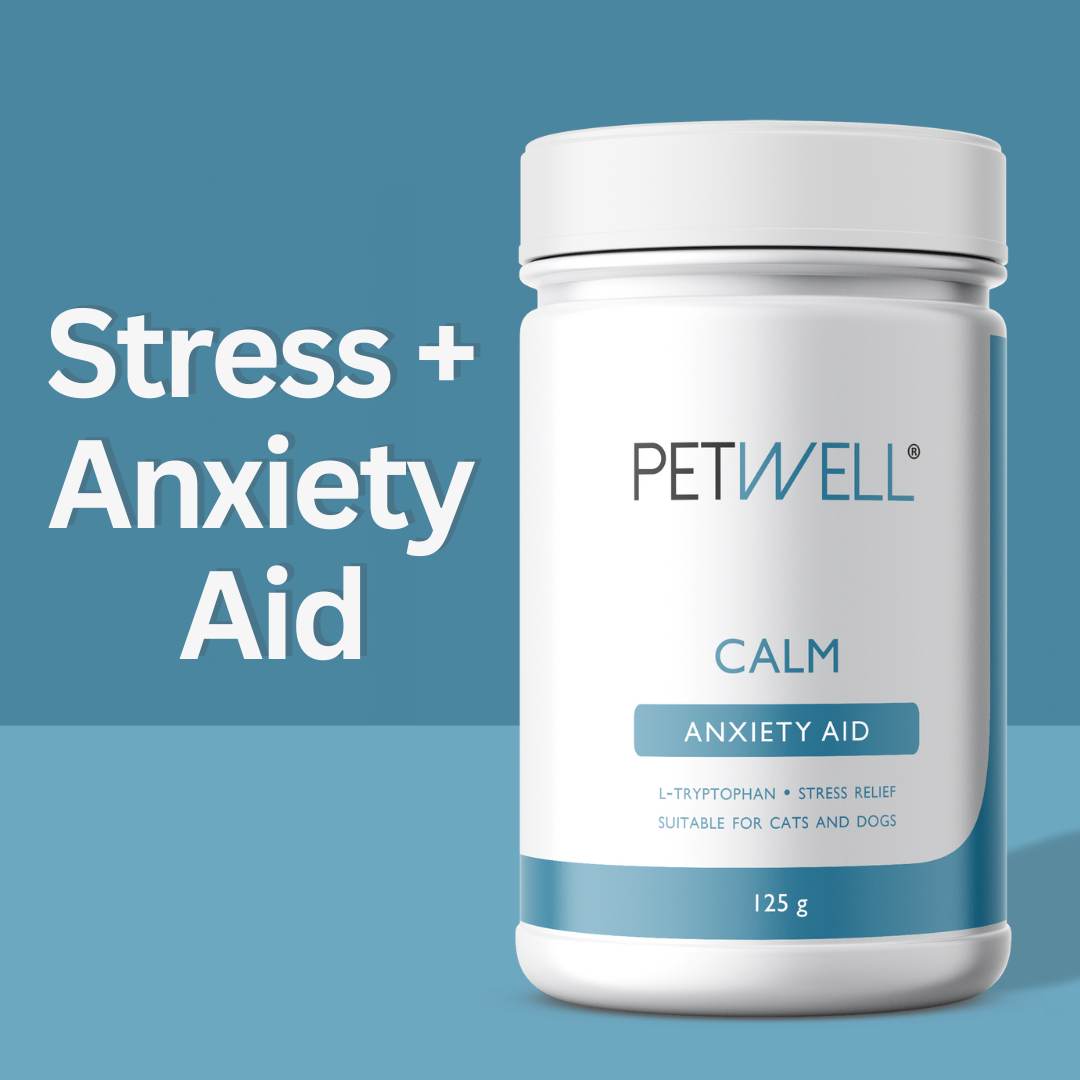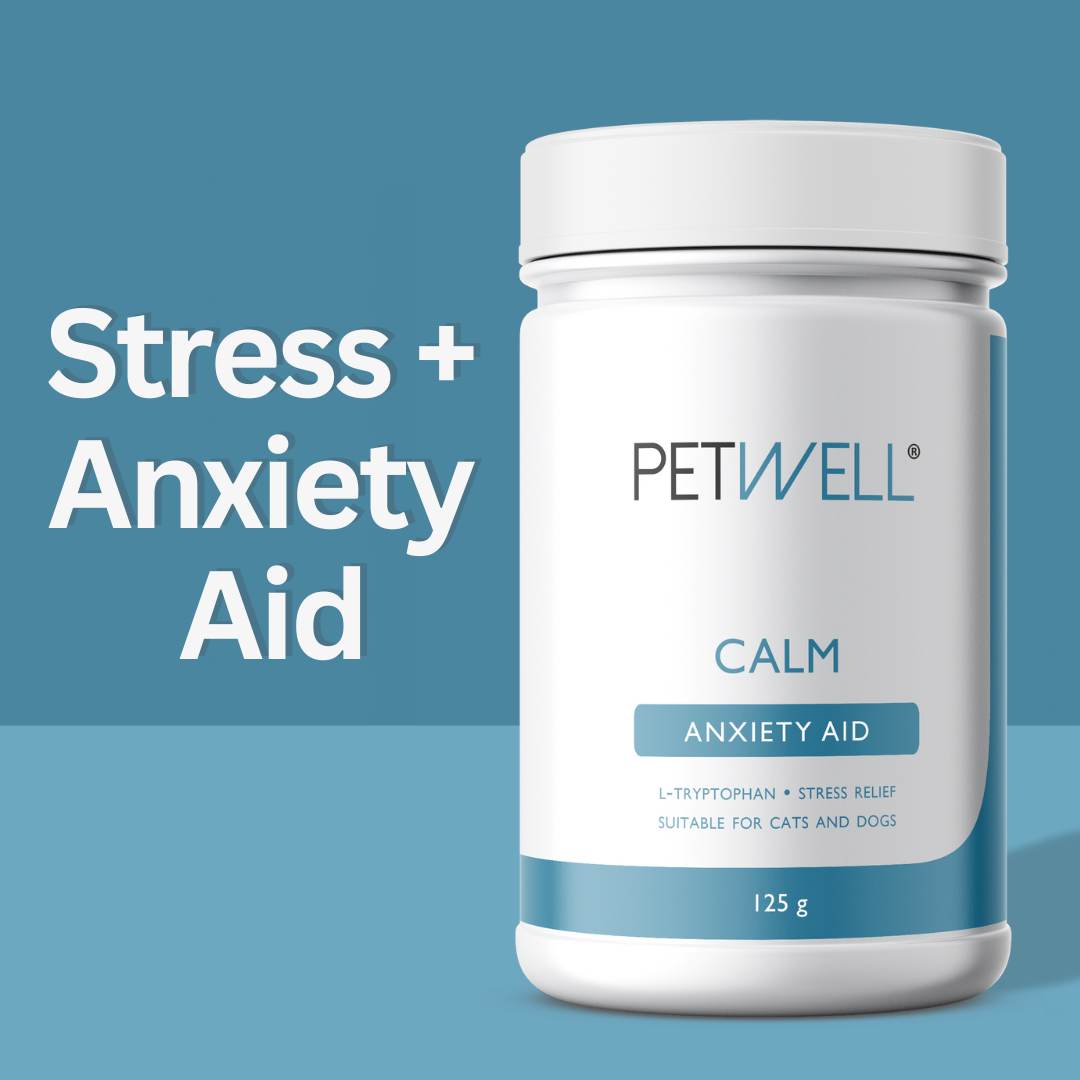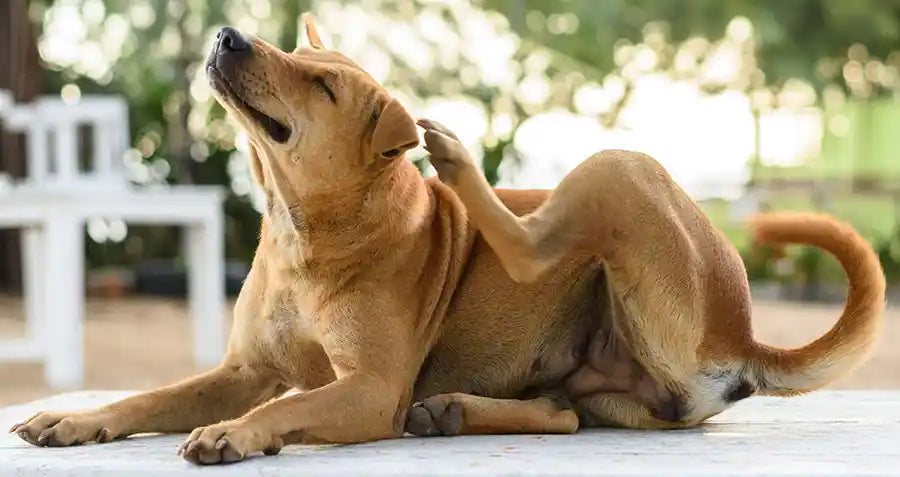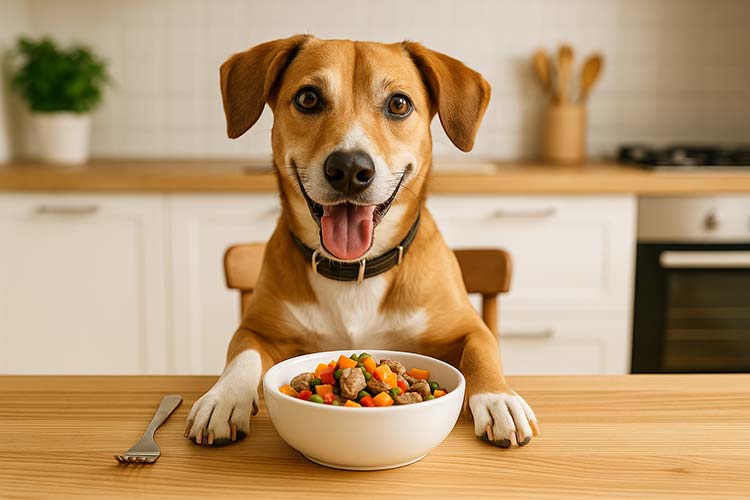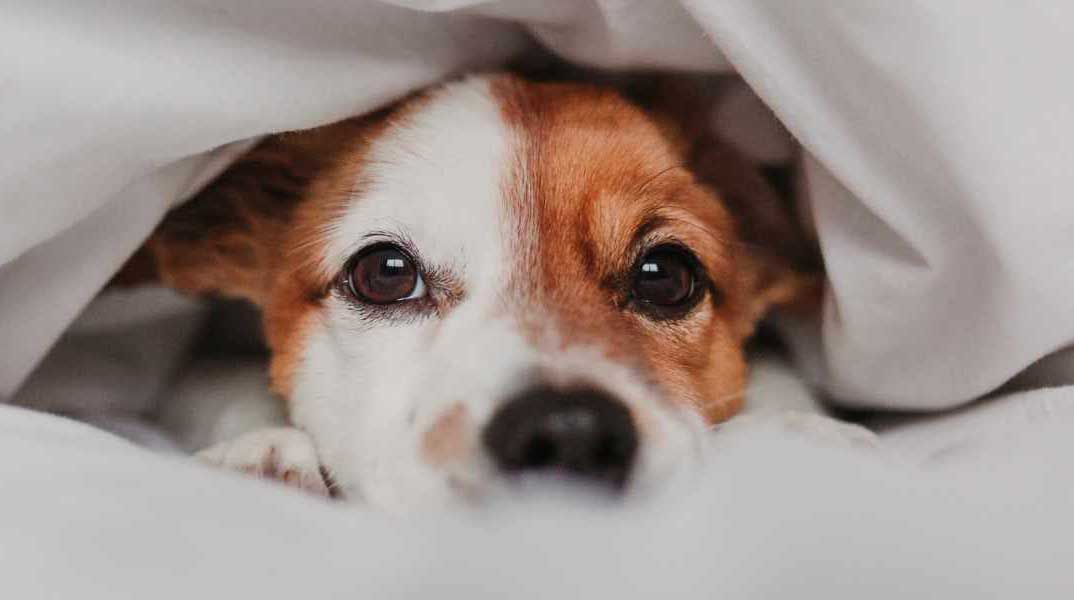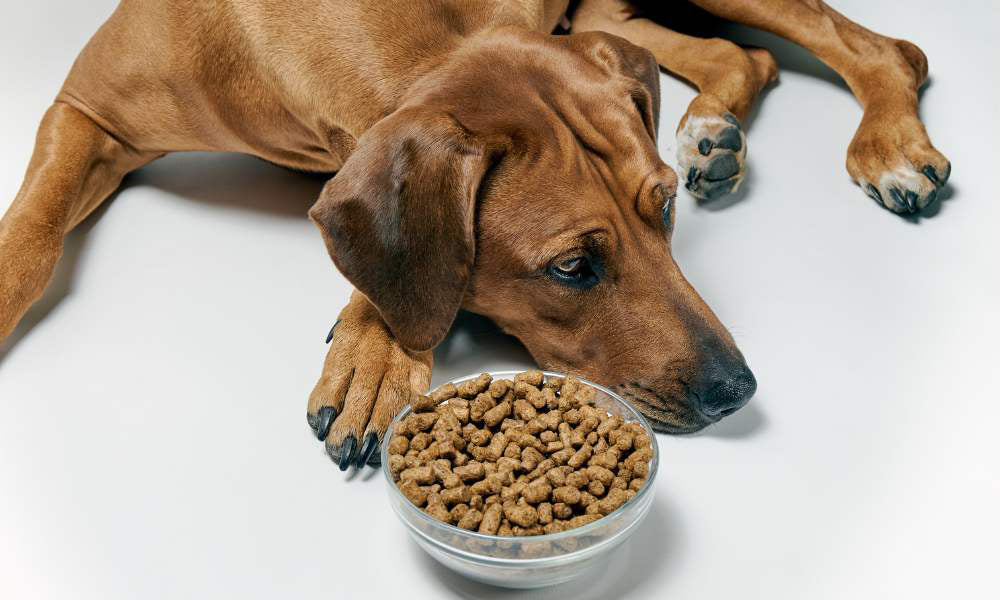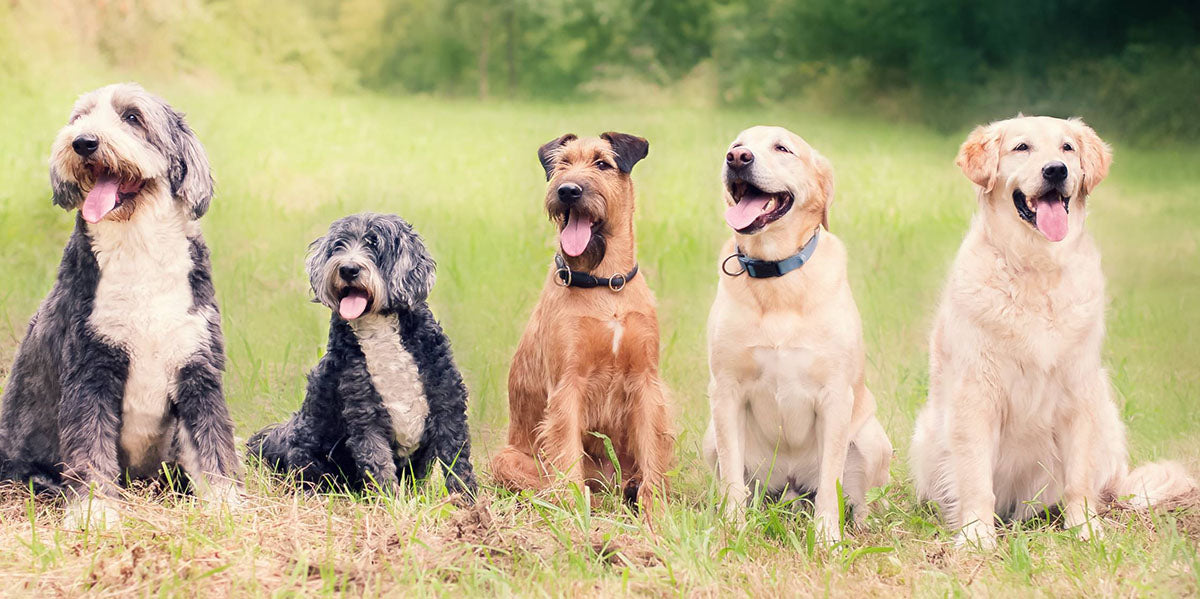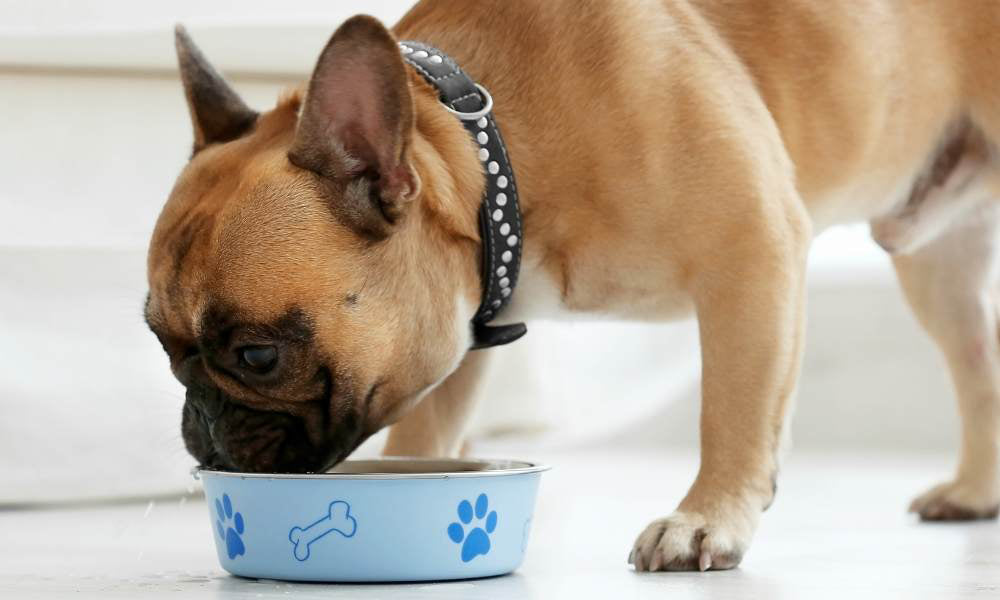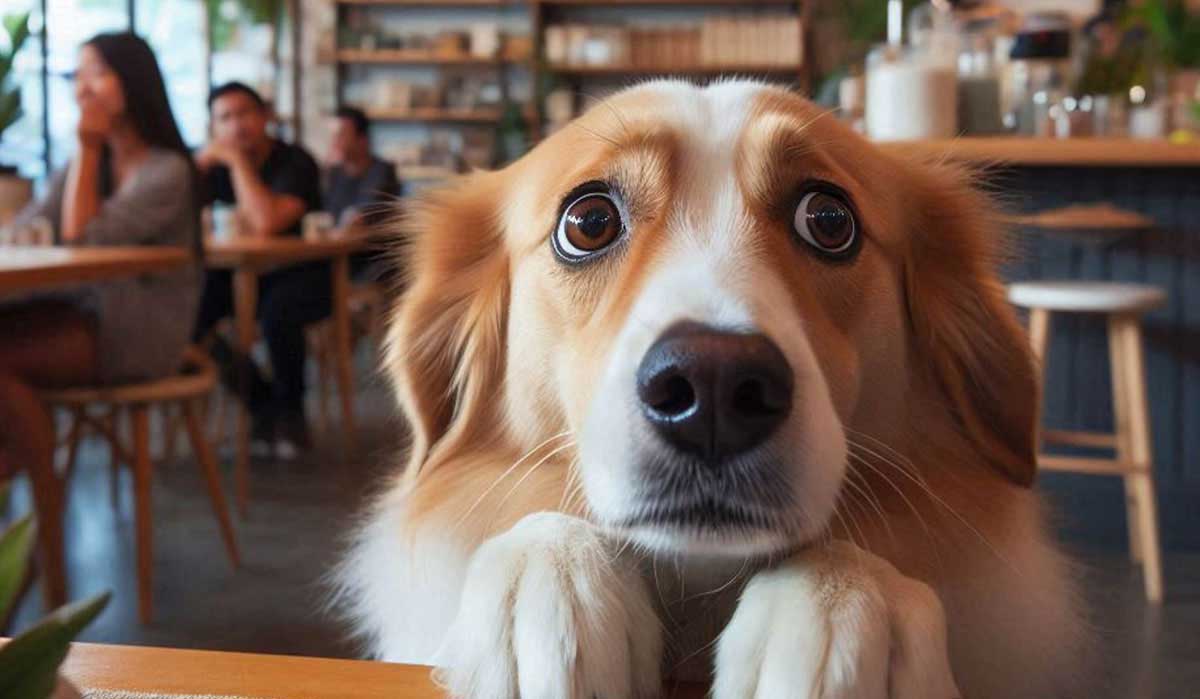Knowing the signs to watch out for dog anxiety is crucial for knowing how to calm your dog. In this guide, we'll explore the symptoms, and management techniques for dog anxiety.
We'll also discuss various products and tips available to help ease your dog's anxiety and improve their overall well-being.
18 Signs of Anxiety in Dogs
Excessive Barking, Growling or Howling
Vocalisation such as barking, whining, or growling is very normal in dogs. However, when vocalisation is extreme and seemingly for little reason, it can be a sign of anxiety.
Aggressive Behaviour
An anxious dog might become defensive or fearful, leading to growling, snarling, or even biting. Read more about What Causes Canine Aggression?
Pacing or Restlessness
Anxious dogs may pace back and forth or have difficulty settling down. They might seem on edge, unable to relax or find a comfortable spot.
Destructive Behaviour
Destructive chewing can occur when dogs are anxious, especially if they are left alone for long periods.
Excessive Digging
This behaviour can be an outlet for nervous energy or a way to create a safe space or escape route.
Inappropriate Elimination
This can result from stress or fear, especially when the dog feels threatened or insecure in their environment.
Avoidance Behaviour
Dogs may avoid triggers that cause anxiety, such as people or situations, to reduce stress.

Shaking or Trembling
This trembling is a physiological response to the body's "fight or flight" mechanism, indicating that the dog feels threatened or uneasy.
Increased Heart Rate
Anxiety accelerates the heart rate, mirroring the dog's heightened arousal.
Panting or Drooling
Excessive panting and drooling can be physiological responses to anxiety
Pupil Dilation
Enlarged pupils suggest anxiety in dogs
Excessive Grooming or Licking
Dogs sometimes engage in this behaviour to soothe themselves when they are anxious or stressed.
Loss of Appetite
They may lose interest in food, eat less, or even refuse to eat at all.
Frequent Yawning
Frequent yawning can serve as a calming mechanism.
Seeking Comfort from the Owner
They seek reassurance, staying close to their owners for safety and emotional support.
Tail Tucked Between Legs
This is a submissive gesture, indicating fear or submission in response to perceived threats.
Avoiding Eye Contact
Dogs may avert their gaze when anxious, signalling unease, submission, or social anxiety.
Decreased Playfulness
Anxiety can reduce a dog's enthusiasm and willingness to engage in playful activities they typically enjoy.
Consulting with a professional dog behaviourist can help you determine the cause of these behaviours
The presence of one or more of these behavioural signs doesn't necessarily mean your dog is experiencing anxiety.
Observe your dog's overall behaviour. Consider the context and consulting with a professional dog behaviourist can help you determine the cause of these behaviours and provide appropriate support and intervention for your anxious dog.
What Causes Dogs to Feel Anxious?
Understanding the root causes of anxiety in dogs is crucial for effective management and support. Here is a list of common causes:
- Loneliness (separation from owner)
- Loud Noises
- New Environments
- Health Issues
- Past Trauma
- Lack of Exercise
- Inadequate Mental Stimulation
- Unpredictable or Harsh Discipline
For more information and specific tips of dealing with these causes, read What Causes Anxiety in Dogs? A Quick Guide
15 Tips for Calming an Anxious Dog
Managing anxiety in dogs often requires a multifaceted approach. Here's a deeper look at anxiety management for dogs:
Professional Dog Behaviourist
An experienced behaviourist can work with your dog to address specific anxiety-related issues.
Remove the Triggers of Anxiety
Identify the triggers that make your dog anxious. You can identify them by changing the environment and routine of your dog. For example, if you think your dog is afraid of other dogs and people in the park. Then skip the walk to the park. Check if your dog is still anxious.
Consulting with professionals allows for a personalised approach, addressing your dog's specific anxiety triggers and symptoms.
Creating a Safe Space
Designate a quiet, comfortable area with their favourite toys, where your dog can find security and relaxation when anxious.
Regular Exercise and Playtime
Engage in breed specific physical activities that release endorphins, reduce stress, and promote overall well-being.
Positive Reinforcement Training
Reward-based training methods to build your dog's confidence and reduce anxiety. Obedience commands help them understand what's expected, providing structure and reducing anxiety.
Calming Music or White Noise
Play soothing sounds to mask anxiety triggers and promote relaxation, helping your dog feel at ease.
Consistent Routines
Establish daily schedules to make your dog feel secure, reduce uncertainty, diminish anxiety, and encourage calm behaviour.
Socialisation
Introduce your dog to a variety of people, animals, and environments to build confidence and reduce fear.
Use of Natural Supplements for Dogs
The use of supplements can help relieve your dog’s anxiety. Always choose an all-natural supplement without synthetic ingredients. Using food-based supplements like PetWell CALM, not only assists in managing their stress and anxiety, but it’s also completely safe, free of chemicals and nasties.
Positive Exposure to New Experiences
Gradually expose them to new situations, making sure they associate them with positive outcomes.
Mental Stimulation
Mental stimulation keeps your dog occupied without exhausting them with additional exercise. Give the puzzle toys, play hide and seek. Hide treats in difficult-to-find places and allow your dog to explore by using their senses.
Let your Dog Sniff and Explore
Dogs have a curious nature, and they like to smell everything. When walking outside, let your dog sniff around. This is mentally and physically stimulating for them. It improves behaviour and decreases stress levels and heart rate.
Stay Calm and Confident in Front of Your Dog
You are the focal point for your dog, and they sense your mood. They can pick up your stress and anxiety, so be confident and composed around them.
CBD Oil for Pets
There is growing research on the calming benefits of CBD oil. Some vets have started recommending CBD oil for dogs as it helps them stay calm and is also non-toxic. It is also beneficial for arthritis, seizures, and digestion problems.
Consulting with a Holistic Veterinarian
A holistic veterinarian can rule out any underlying medical causes and recommend or prescribe medication - in extreme cases. (Note: prolonged use of synthetic medications to manage anxiety can lead to organ damage).
Read for more tips on How to Calm Your Dog
By providing a supportive and loving environment, along with professional guidance, when necessary, you can help your fur family lead a happier and more balanced life.
In Summary
By identifying the signs, understanding the causes, and implementing appropriate management techniques and products, you can help your dog lead a happier, more relaxed life. Seeking professional guidance when needed and tailoring your approach to your dog's unique needs is key to successfully managing canine anxiety.
Read more about Dog Anxiety: Causes, Symptoms & Solutions
Disclaimer: The entire contents of our emails and website are not to be taken as medical advice. The team at Pet Squad Pty Ltd trading as PetWell encourages you to make your own pet healthcare decisions based on your research and in partnership with a qualified pet healthcare professional.







